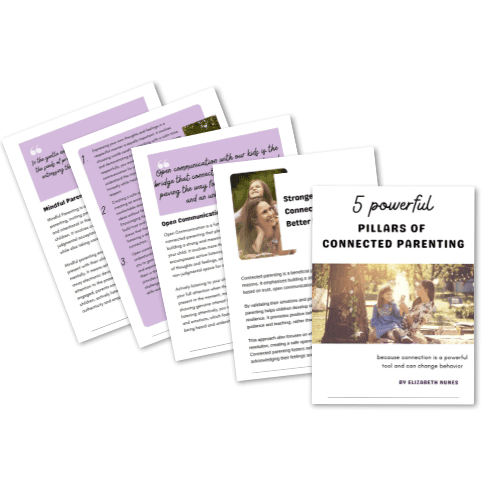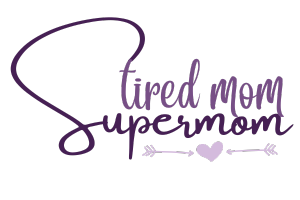Does Elf On the Shelf Make Kids Behave Better?
If you have kids, chances are you’ve heard of or seen an Elf on the Shelf. The controversial character has been around since 2005, and each year its popularity increases.
But how effective is it really? As a parent who has used this toy with both my children and as an educator who has worked with children for more than 20 years, I believe that the answer is: not very effective at all.
In fact, in my opinion, using this toy can be harmful to your child’s development—and perhaps even promote bad behavior!
This post may contain affiliate links. Full privacy policy and disclosure here.

What is the Elf on the Shelf?
The Elf On The Shelf is a storybook character created by Carol Aebersold and her daughter Chanda Bell. It has been a Christmas tradition since 2005 and can now be found in homes all over the world, including yours!
The premise of the book is that an elf comes to live with your family at Christmas and watches your kids. At night, he flies back to the North Pole to tell Santa Claus everything he’s seen or overheard during his time with you—and if he doesn’t report back, Santa begins to know it.
For example: one day, my wife decided to hide some cookies for her kids under our Christmas tree (she knows how much they love cookies), but she didn’t want them getting any ideas about stealing from Santa Claus on Christmas morning (like trying to get into our house before we get home from church so they can steal his presents). So she put up this sign: “Do not eat these cookies unless you’re willing to face the consequences.” As soon as I got home from work that evening, our middle child showed me what was written on her sign and asked me why we weren’t allowed inside yet—which I obviously found very confusing because aren’t elves supposed to protect us?
How can You Use Elf on the Shelf?
You can use your Elf on the Shelf to help reinforce good behavior and reward children for being good. For example, if your child has been helpful around the house, you could tell them that they get to put their elf in a new spot at night. This is an easy way to teach children that doing nice things deserves praise.
The Elf On The Shelf can also be used as a teaching tool to help prepare kids for Christmas and Santa Claus’s arrival. If you start reading stories about Christmas elves early enough, you’ll find some great ones that will spark lots of fun discussions with your child about what might happen during the holiday season and why it’s important to be kind all year-round.
Lastly, by having an elf hang out in different places throughout each day (and sometimes even overnight!), it’s possible for children who aren’t necessarily familiar with Santa Claus yet still believe in magic – which means all young kids! – will still enjoy seeing where their little buddy has been hiding amongst their toys or clothes pile.”
The Problem With Using Rewards With Children
The problem with using rewards is that their effectiveness depends on how you use them. Rewarding bad behavior can backfire and make things worse, while rewarding good behavior can be a great way to encourage positive behaviors in children.
If a child is used to getting rewarded for misbehaving, they might begin engaging in that same type of behavior when they don’t get the reward they expect.
For example, if you tell your child he’ll receive candy every time he cleans his room without being told first, and then one day forget to offer him the candy even though he has cleaned his room just like usual (because maybe something came up or maybe you forgot).
He might decide it’s not worth cleaning his room anymore because he never gets paid off anyway—and so on until finally all of your attempts at incentives have been thwarted by this one angry little kid who has no interest whatsoever in being nice or helping out around the house once anything goes wrong.
Use Effective and Related Consequences
- Teach your child that the reason he is getting a consequence is because of his behavior, not because you are angry with him. For example, “We have to stop this activity so that we can go home because we need to be home on time.”
- Make sure the consequences fit the crime. Nothing teaches children better than when their actions have consequences—and it’s important to make sure those actions are age-appropriate and make sense for a child’s developmental level. For example, if your child hits another child at daycare or school (even in jest), he should lose valuable classroom time; if you give him a spanking at home for hitting someone else, it sends mixed messages about what’s acceptable behavior.
Give Kids Your Attention
A child’s attention span is short, and they have a lot of energy. The amount of time you spend with them can be the difference between a good relationship and bad one.
There are several ways that you can use this time to teach your kids, including:
Using their interests as a way to teach them new things or reinforce what they already know.
For example, if your child loves dinosaurs, choose an appropriate book on dinosaurs and read it together while explaining the information in it; or if they enjoy drawing pictures or playing video games, encourage them by allowing them to show off their creations (and give praise when appropriate).
This will strengthen your bond and help them build self-esteem as well as improve their educational skills at the same time!
Take Time To Learn New Parenting Skills
- Talk to your kids about their behavior and the consequences. Don’t use rewards or punishments, but focus on the positive things they do.
- Ask for help from other parents who have been there before you, especially if you need advice for disciplining your child or dealing with their behavior during certain situations (such as when they are sick). You may also want someone else around in case something goes wrong with the Elf On The Shelf, like if it falls off its shelf or gets lost under a pile of laundry while trying to find Santa Claus at night.
- Don’t be afraid of making mistakes—every parent does! Just remember that if something happens accidentally (like tripping over your child’s toy), then just apologize and move on! 🙂 Otherwise… try not too worry too much about it because everything will work out just fine in the end 🙂
Conclusion
The Elf on the Shelf is a creative way to help your kids learn about the importance of being responsible, but it’s not the only tool. There are many other ways that you can use positive reinforcement and effective consequences in your child’s life so that they can be happier and healthier as they grow up.

Get Your Free Download
Take your parenting journey to the next level with our comprehensive ebook on Connected Parenting.
Download this ebook now and embark on a transformative parenting experience that will strengthen your bond with your child and bring joy and fulfillment to your family life.
Download Here
More Like This
- 116 Christmas Movie Trivia Questions To Play With Your Family This Year
- 11 Sweet Ways To Make Christmas Magical For Children
- Get Into The Holiday Spirit with These Joyous Christmas Books For Kids
- Fun New Years Countdown Activities For Kids







